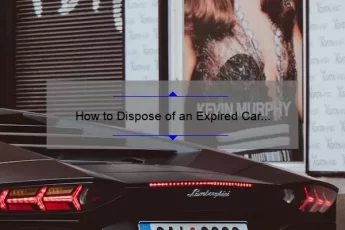Before you start pumping E85 fuel into your car, consider what happens if you do. You may notice that your car runs the same way it always does, but it might be 30% less efficient. This difference in efficiency may not affect the amount of fuel you save, though. In addition, you may see your check engine light come on, which is a sign that the car is running lean—running lean causes the engine to work harder, which can destroy valves and cause the engine to overheat.
FFVs can run on an ethanol-gasoline blend.
Today, many automakers are making FFVs that can run on an ethanol-gasoline mixture. While the vehicle’s actual performance isn’t affected by ethanol, the vehicle may use a lower amount of gas. The reason for this is that ethanol raises the octane of the fuel. Regular gasoline has an octane rating of 84 to 93, while E85 has several around 110. A higher octane number allows the engine to withstand higher compression before auto-igniting, but it also increases the risk of engine knock. So it is essential always to follow the directions in the owner’s manual to avoid any problems.
Another big drawback of using ethanol in your vehicle is that it can damage your fuel system. Ethanol can damage rubber O-rings, injectors, and even your car’s computer. E85 can also harm vehicles that are not made for it. This is why you should check the owner’s manual of your car to see whether it can run on an ethanol-gasoline blend.
If you’re considering purchasing an FFV, you may wonder how to buy one. Flex-fuel vehicles are cars that can run on any gasoline-ethanol blend up to 85%. The FFVs have special onboard diagnostics that can read the fuel blend and make necessary adjustments to the ignition and fuel injection systems.
It costs more per gallon than regular gas.
Since its introduction in Minnesota, E85 fuel has been popular with motorists. On average, it costs about 0.30 cents per gallon more than regular gas. According to Mike Taylor, a state fuel sales analyst, E85 sales increased from $4 million in 2004 to an estimated $15 million in 2005. The number of E85 pumps also increased.
Fuel prices continue to rise daily, but some drivers are finding a cheaper alternatives. E85 fuel is an ethanol-gasoline blend, usually 85% ethanol and 15% gasoline. In Michigan, 320 gas stations sell E85, which costs an average of $4.06 per gallon, which is more expensive than regular gas but is still cheaper than the standard variety. Prices are even lower in metro Detroit.
E85 is only available at some gas stations, so you may have to hunt for a store that sells it. The downside of using ethanol is the reduced gas mileage. But the good news is that ethanol is a renewable energy source, and the prices of ethanol are constantly changing.
It has a lower octane rating.
E85 fuel is an ethanol-gasoline blend. It contains a lower octane number than regular gasoline, but ethanol gives it better performance. E85 is produced in California and contains up to 83% ethanol. It is a cleaner fuel than traditional gas and costs less at the pump. It also helps rural communities by boosting the economy.
E85 also has a significant cooling effect, making it a safer fuel option for high-performance vehicles. The lower fuel temperature allows the combustion chamber to operate at a safer temperature, which can lead to more horsepower. If you plan to use E85 fuel, check your vehicle’s octane rating and replace cylinders, gaskets, and fuel pumps as soon as possible.
The difference between premium and midgrade fuel is less significant than one may think. E85 has a lower octane rating than premium gasoline, but it can still work in some vehicles. But the increase in cost may outweigh any fuel savings. And for some consumers, reducing their carbon footprint and using less petroleum is more critical than the cost.
It attracts moisture
If you’re running on E85 fuel, you’ve probably noticed that the power can attract moisture. E85 energy is highly receptive to humidity and draws moisture from the air. This moisture is terrible for your car because it contributes to rust formation and can also clog your fuel injectors and carbureted engines.
It causes pre-ignition
Pre-ignition in a car engine can occur in several situations. This condition is a precursor to detonation, a type of explosion that occurs when the fuel burns faster than the air in a cylinder. Typically, pre-ignition is caused by a spark plug firing, but it can also happen independently. It occurs when the fuel/air mixture reaches the leading edge of the flame front before the spark plug ignites the mixture. It can cause a large explosion if it is uncontrolled.
Another cause of pre-ignition is the use of ethanol. Ethanol increases the heat in the combustion chamber, which causes the spark plug to become hotter and more likely to ignite the fuel. When this happens, carbonaceous deposits accumulated on the piston can ignite, creating a hot spot inside the chamber. Pre-ignition creates an imbalance inside the engine, which stresses many components. It can also result in an engine knock.
The ignition point of E85 fuel is much higher than gasoline’s, which means that it is more sensitive to pre-ignition. This can be especially problematic in high-compression race engines and forced induction motors. E85 is a slower-burning fuel, and the combustion process produces carbon dioxide, water, and aldehydes.
It’s non-toxic
E85 fuel in cars is safe for the environment and has numerous benefits for the car’s performance. Ethanol fuel burns cleaner than gasoline, which minimizes harmful deposits in the engine and helps reduce outdoor car smog. It also has a slight cooling effect as it passes through the intake tract. Because of this, the car will run more relaxed, which can improve fuel efficiency and performance. However, the use of ethanol in cars is not without risks. While it is non-toxic, it does attract moisture in the engine, which can deteriorate rubber seals and gaskets in the vehicle.
However, not all vehicles are compatible with E85 fuel. Older cars are not advised to use E85 energy because it can cause damage to the fuel system components. The ethanol in the fuel may also corrode aluminum, rubber, and magnesium. To run E85 in older cars, you must change the fuel system and tune the engine to run on E85 fuel. You may also need to replace the fuel hoses.
Ethanol is the most commonly used fuel in vehicles. It is available in different forms, ranging from E10 to E85. This type of fuel is a blend of ethanol and gasoline. Older cars and performance vehicles that use carburetors can also use ethanol. It is known for its high octane and cooling qualities.
It’s biodegradable
A growing number of automobiles use biodegradable fuels such as ethanol. Ethanol is biodegradable and can be blended with gasoline in varying amounts to provide a cleaner and more renewable energy. Many manufacturers are now producing E85-capable vehicles. The availability of these vehicles is also increasing. More recent research focuses on generating ethanol from other sources, such as algae that can grow in arid areas. These algae could be an excellent alternative to ethanol-based fuel.
Ethanol is biodegradable, non-toxic, and environmentally friendly. It is a water-soluble substance produced from the fermentation of plant sugars. Corn is the primary source of ethanol. A vehicle can run on up to 85% ethanol and 15% gasoline.
Some significant concerns about ethanol include limited availability and distribution. E85 can be challenging in some areas, such as Austin, Texas. The production of ethanol requires large amounts of arable land and energy balance. In addition, ethanol is also somewhat corrosive, which could negatively affect older vehicles.








